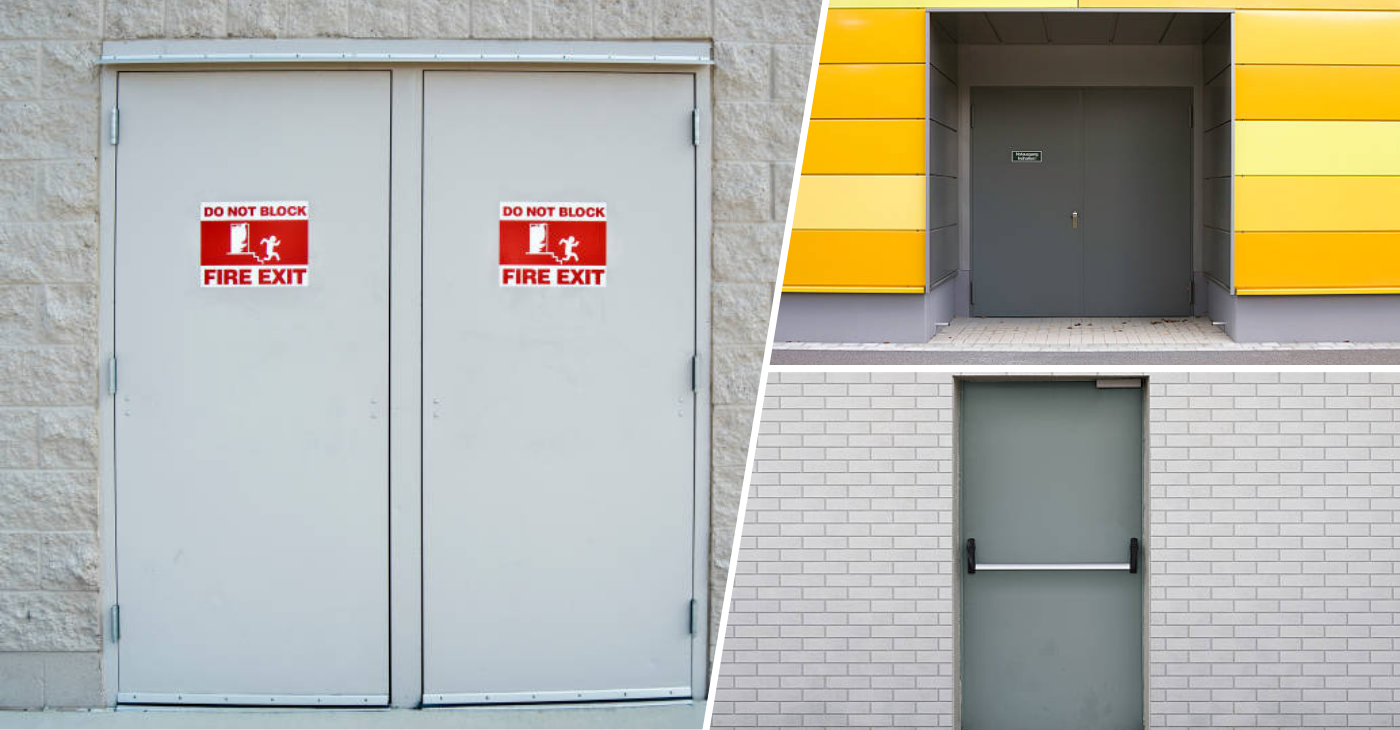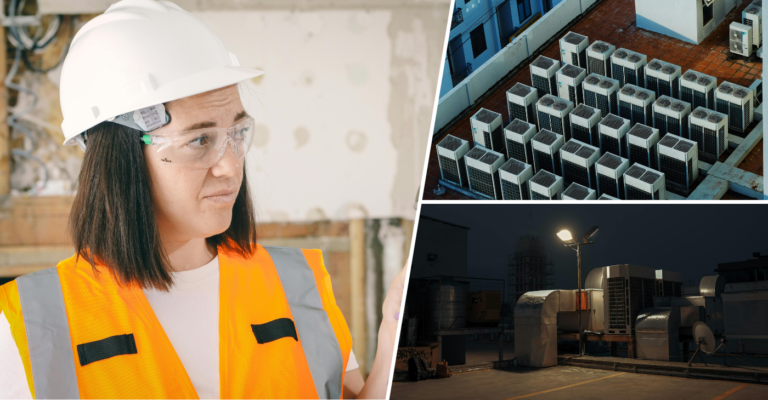How steel fire exit doors enhance your property’s fire safety?
Steel fire exit doors are essential for more than just providing an escape route during emergencies. They are designed to stop fire and smoke from spreading, giving people extra time to safely evacuate. These doors also help protect the building’s structure during a fire. In this article, we’ll explore how steel fire exit door boost your property’s safety, why they are vital for modern buildings, and the key ways they protect lives and property from fire.
What are steel fire exit doors?
Steel fire exit doors are specialised doors made from fire-resistant materials. They are designed to withstand extreme heat and stop fire from spreading to other areas of a building. Unlike regular doors that can burn or collapse when exposed to high temperatures, steel fire doors stay intact during a fire. This gives people more time to escape and allows emergency services to respond.
These doors are usually installed in high-risk areas like stairwells, corridors, and entryways leading to evacuation points. Their placement ensures that people can safely exit the building. Fire exit doors are often required by building regulations and must meet strict standards to ensure they work properly in an emergency.
Why are fire exit doors critical for property safety?
When a fire starts, every second is crucial. Fire exit doors are the first line of defense against the quick spread of fire and smoke. They help contain the fire in one area and stop it from moving through open spaces like corridors and staircases. Without these barriers, fire can rapidly travel from room to room, trapping people and engulfing the building in flames within minutes.
Steel fire exit door creates secure, fireproof sections in the building. This ensures escape routes stay clear for a longer time. It gives everyone more time to get out safely and lowers the risk of smoke inhalation or burns.
How does steel fire exit door work?
The main job of a steel fire exit door is to slow down the spread of fire and smoke. These doors are made from steel and other fire-resistant materials. This allows them to handle the intense heat of a fire without losing their shape or ability to function. Since steel is non-combustible, it doesn’t catch fire or help the flames spread, making it ideal for this purpose.
Steel fire exit doors also come with intumescent seals. These seals expand when exposed to high heat, closing the gaps around the door. This prevents smoke and harmful gases from passing through. Some steel fire exit doors can hold up against fire for 60 minutes or more, giving people more time to escape and allowing emergency crews to manage the fire.

Key benefits of installing steel fire exit door
Steel fire exit door offers a variety of benefits that make them an essential addition to any building’s fire safety system:
1. Fire containment and resistance
Steel fire exit doors are designed to withstand high temperatures and provide effective barriers against fire and smoke. Their ability to resist fire for extended periods helps slow down the spread of flames, providing critical time for building occupants to evacuate and for emergency responders to control the situation.
2. Durability and strength
Steel is one of the strongest materials available, making these doors incredibly durable and long-lasting. Unlike wooden or aluminum doors, which may warp or degrade over time, steel fire doors maintain their structural integrity even in extreme conditions. This strength ensures that the doors remain functional when they’re needed most.
3. Compliance with fire safety regulations
In many jurisdictions, fire exit doors are required by law in commercial and public buildings. Steel fire exit doors are often part of building codes, and installing them ensures that your property complies with these regulations. Non-compliance can lead to hefty fines or legal repercussions, so steel fire exit door provides peace of mind in meeting safety standards.
4. Enhanced security
Beyond their fire-resistant properties, steel fire exit door offers enhanced security against break-ins and forced entry. Their robust construction and locking mechanisms make it difficult for intruders to breach them, providing an extra layer of protection for your property.
5. Noise reduction
Steel fire exit door can also serve as effective sound barriers, reducing the amount of noise that travels between different areas of a building. This feature can be particularly useful in schools, hospitals, and office buildings where noise control is important.
6. Low maintenance requirements
One of the major benefits of steel fire doors is their low maintenance. Steel is resistant to rust, corrosion, and wear, meaning these doors will continue to perform effectively for many years with minimal upkeep. Regular fire door inspections and the occasional lubrication of hinges are typically all that’s required to keep them functioning optimally.
Where should steel fire exit door be installed?
The placement of steel fire exit door is essential to their effectiveness. They should be strategically installed in areas that provide access to escape routes and in locations where the risk of fire spreading is highest.
Typical places where steel fire exit door should be installed include:
- Stairwells: To ensure safe passage to lower floors and exits.
- Corridors: To prevent fire from moving through hallways and trapping occupants.
- Exit points: Fire exit doors should be installed at all emergency exits to guide people safely out of the building.
- High-risk areas: Areas such as kitchens, mechanical rooms, or storage areas that are prone to fire should be fitted with steel fire doors to contain any potential outbreaks.

Steel fire exit door vs. other types of fire door
Fire exit doors are made from different materials, but steel doors stand out for several reasons. Steel is much more durable and fire-resistant than wood or aluminum. Wood, even when treated with fire-retardant materials, burns through faster, while aluminum can quickly weaken in high heat.
Steel fire exit door also offers better security. Their strength and resistance to physical damage make them a good option not only for fire protection but also for preventing unauthorized entry. While wooden fire doors may look better for some interiors, steel doors can be finished in different colors and styles. This allows them to fit the building’s design while still being strong and functional.
Maintaining steel fire exit doors
To ensure that your steel fire exit doors perform as expected in an emergency, regular maintenance is required. Fortunately, steel doors are relatively low maintenance compared to other types of fire doors, but a few key practices should be followed:
- Regular Inspections: Check that the door closes properly and that there are no obstructions. Ensure that the intumescent seals are intact and not damaged.
- Lubrication: Hinges and locking mechanisms should be lubricated periodically to ensure smooth operation.
- Testing: Fire exit doors should be tested as part of routine fire drills to ensure they open freely and close tightly.
Neglecting maintenance can lead to poor performance during an emergency, so it’s vital to keep these doors in good working order.
Why steel fire exit doors are an investment in safety
Investing in steel fire exit door means investing in the safety of your property and its people. Fires are unpredictable, and the right barriers can be the difference between a small incident and a disaster.
Steel fire exit door offers top-level protection by containing the fire, securing escape routes, and giving everyone time to evacuate safely. Their strength, durability, and fire-resistant qualities make them a key part of any solid fire safety plan.
Summary – The vital role of steel fire exit doors in fire safety
Steel fire exit doors are not just emergency exits. They are vital tools in preventing the spread of fire and protecting both lives and property. These doors are built to withstand extreme heat, slowing down the fire and keeping it contained. This helps ensure people can evacuate safely and reduces the risk of fire damage spreading throughout the building. Their durability, fire resistance, and compliance with safety regulations make them a must-have for any structure. Steel doors are designed to meet strict fire safety standards, which is why they’re trusted in both commercial and residential buildings. By installing steel fire exit door, you’re taking a strong step toward protecting your property. It gives you confidence that, in the event of a fire, your building has a solid defense system in place to safeguard everyone inside and minimize damage.







